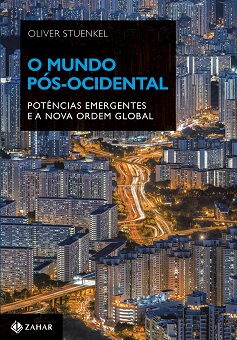#630 February 2012
THE LUSOSPHERE: A symposium on India and the Portuguese speaking world
OLIVER STUENKEL
INDIA’S rise is certainly one of the most fascinating stories in international politics of the past decades; yet the interpretation of the country’s ascendancy differs according to the observer’s perspective. Seen as a regional threat by Pakistan and China, the United States has identified India as an important partner in Asia and beyond. At the same time, there is evidence that India is increasingly regarded, in several places, as comparable to China, representing a mix of economic threat and opportunity. In the Middle East, for example, Indian engagement is fundamentally framed by India’s growing need to import energy to sustain its rise. Yet, how is India seen in Brazil, the geographically most distant BRICS member? How is Brazil studying, viewing and deciding issues related to India?
Despite the many common challenges and a shared BRICS and IBSA identity, India remains remarkably underexplored by Brazilian academics and policy makers, and India-related decisions are often based not on country-specific information, but on vaguely defined images and concepts, the most prominent of which is the South-South partnership promoted by Brazil’s former President Lula da Silva. Brazil’s diplomatic presence in India remains far smaller than in countries such as France, Italy or China. This lack of knowledge is surprising given the near consensus about India’s long-term economic growth and certain medium-term importance in both the political and economic realms. Brazil’s India strategy is strong on grand rhetoric and high-profile encounters, but it is yet to be seen whether Brazil is able and willing to engage India in a more lasting and substantive partnership.
How can we explain this gap? A look into the past can be instructive. The history of India-Brazil relations, though generally benign, is marked by accidental and haphazard encounters. Five centuries ago, the Portuguese seafarer Pedro Alvares Cabral, on his way to India, was blown off course and landed on the Brazilian coast. After some initial excitement about the discovery, the Portuguese came to regard Brazil as much less strategically or economically valuable than India, and the South American discovery remained an emergency pit stop for ships that had run into technical or logistical problems. Still, this was enough to allow for the exchange of plants between India and Brazil early on. Manioc and cashew, both native to Brazil, were introduced in India, and India’s coconut and mango entered Brazil. While introduced much later, most of the cattle in Brazil today are of Indian origin.
Yet, for the following centuries ties between the Portuguese and British colony lay largely dormant. Upon gaining independence in 1947, the Indian government allocated land for important allies’ embassies along Shanti Path, the most luxurious street in New Delhi’s diplomatic neighbourhood, but the Latin American nations were not considered. The region, including Brazil, was simply not on India’s diplomatic or economic radar. Very much the same applied to India in Brazil, which was seen as an exotic place too far removed from Brazil’s more immediate concerns in its region.
Until well into the 1960s, there was not a single trade agreement between the two, and no more than 20 Indian visas were issued for Brazilians annually, most of them for diplomats. Despite the mutual ignorance, India did figure in the Brazilian universe as an ally in spirit. Particularly for Brazil’s leaders with a more developmentalist outlook, India’s world view seemed to be largely aligned with its own, and in the 1960s, the recently-founded UNCTAD (UN Conference on Trade and Development) and the G-77 were platforms that allowed both countries to articulate joint positions on several important issues.
For example, both Brazil and India were highly critical of nuclear weapons early on, and both condemned the enactment of the Non-Proliferation Treaty (NPT) in 1967, calling it an attempt to ‘freeze’ the international power structure to contain emergent powers such as Brazil. Both countries supported the idea that rich countries should use the money not spent on arms to help developing countries fight poverty. The ‘3 Ds’ (disarmament, development, decolonization) represented an important aspect of their foreign policy. Although India embraced its natural claim to global power status earlier, and in a less ambiguous fashion, there seemed to be a common notion that the current, western dominated world order was fundamentally unjust, and that Brazil and India would somehow play an important role in correcting this plight.
————————————–
Read also:
New article: “Identity and the concept of the West: The case of Brazil and India”
The case for Stronger Brazil-India Relations
Book review: “India’s Foreign Policy: Retrospect and Prospect” by Sumit Ganguly (ed.)









